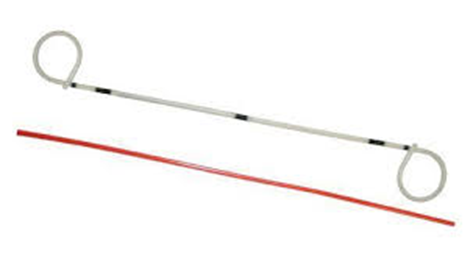What is DJ Stent ?
DJ stents are tiny tubes inserted into the ureter to facilitate urine drainage from the kidney to the bladder . Usually,it remain in ureter between 1 to 3 months They are primarily used for the following purposes:
1. Reducing sharp pain from kidney stones (renal colic) .
2. Allowing drainage when infection is present .
3. Preventing strictures or narrowing during the healing process after kidney stone surgery


Why do I need a Double J Catheter?
The Urologist may suggest a double J Stent intervention when your body cannot get urine from the kidneys to the bladder. Some of the situations that affect the passage of urine through the ureters are:
The double-J Stent helps restore normal urine flow into the bladder.
what are the indn of stenting?
- Anastomosis healing
- Stricture healing
- Passive dilation of ureter
- Stone management
- Post PCNL
- Obstructive uropathy -malignancy,Stone,TB,Stricture, radiation
DJ STENTING PROCEDURE –
Before the Double J Catheter Procedure
The
Urologist
will review your medical history, questions related to
your symptoms, lifestyle, and medical history, and if you are taking any
medications.
Follow all the instructions of your
Urologist
; you must fast before the double J Stent intervention, don't eat or drink
for 8 hours before the procedure.
During the Double J Catheter Procedure
The Urologist will perform the procedure under sedation; the patient will fall asleep and not feel pain. The Urologist inserts the cystoscope until it reaches the bladder. Once in the bladder, the mouth openings of the ureters are located, and the catheters will be inserted through these. The Urologist controls the operation through x-ray images using a C-Arm, which allow him to visualize the entire procedure.
After the Double J Catheter Procedure
After the double J Stent intervention, you will be taken to the
recovery room
where the
Urologist
can control and review your symptoms.
You may have some symptoms, such as:
Following the instructions of your Urologist , you may have a fast recovery. Attend your routine consultations with the Urologist , after some time passed, the Urologist will do a review to verify that it is possible to remove the Double J Catheter.
DJ STENT REMOVAL –
DJ stent removal is a relatively straightforward outpatient procedure, often performed in a urologist's office or a hospital setting. The process typically involves the following steps:
Recovery and Aftercare
Following DJ stent removal, patients can expect discomfort and potential urinary symptoms, typically transient and should improve for a few days. Everyday experiences during recovery include:
A DJ stent (Double J stent) is a flexible hollow tube inserted into the ureter, the line connecting the kidney to the bladder, to facilitate urine drainage. It is commonly used in cases of urinary obstruction or after specific urological procedures.
DJ stent removal becomes necessary once its purpose has been served. It is usually inserted temporarily to allow healing or relieve obstruction. Once its purpose is fulfilled, it can cause discomfort, irritation, and risk of infection if left in for an extended period. Removal ensures patient comfort and reduces the risk of complications.
The duration varies based on the medical condition and the procedure for which it was placed. DJ stents are generally left in place for several weeks to a few months. Your urologist will determine the appropriate duration.
The removal process is typically uncomfortable rather than painful. It might cause mild discomfort, urinary urgency, and a sensation similar to when the stent was initially inserted. Local anesthesia or numbing gel may be used to minimize discomfort.
DJ stent removal is usually an outpatient procedure. A flexible cystoscope is inserted through the urethra into the bladder. The urologist grasps the stent's string (located in the bladder) using specialized instruments and gently pulls the stent out through the urethra.
Complications are rare but can include urinary tract infections, bleeding, discomfort during removal, and injury to the urinary tract. Your urologist will take precautions to minimize these risks.
Your urologist will provide specific instructions. You might be asked to avoid eating or drinking a few hours before the procedure. Inform your doctor about any medications, allergies, or health conditions you have.
You might experience some urinary discomfort, mild pain, or a burning sensation while urinating for a day or two. Drinking plenty of water can help alleviate these symptoms. Contact your doctor immediately if you notice severe pain, fever, or blood in your urine.
Most individuals can resume their regular activities shortly after stent removal. However, avoiding heavy lifting and strenuous physical activities for a few days is advised to allow the urinary tract to recover fully.
Your urologist will guide follow-up appointments. A post-removal visit is scheduled within a few weeks to ensure proper healing and address any concerns.